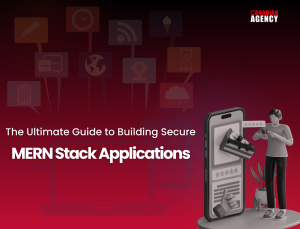In an era in which speed and connectivity are the hallmarks of user experience, “real-time” has become an obligatory attribute for contemporary applications. From instant messaging and live dashboards to notifications that appear the moment they occur, consumers today demand immediate updates.
For developers working with Laravel, this demand is easier to meet than ever. Laravel is known for its elegant syntax and developer-friendly structure, can seamlessly integrate WebSockets to allow users and servers to communicate in real time.
In this blog, we’ll explore how Laravel and WebSockets work together, why they’re essential for today’s digital products, and what best practices can help you build reliable, high-performing real-time apps.
Why Real-Time Experiences Matter
Gone are the days when users refreshed pages to see new data. From chat apps to financial dashboards, everything now happens instantly.
Real-time features make apps feel alive. They keep users engaged, boost satisfaction, and enhance productivity. A few familiar examples include:
- Messaging apps such as WhatsApp or Slack.
- Real-time alerts on social media or e-commerce apps.
- Stock market dashboards are constantly changing.
- Food delivery trackers display real-time driver locations.
What ties all these experiences together is the real-time flow of information. Users don’t wait — they watch updates appear as events unfold.
This instant connection not only improves usability but also sets brands apart in a crowded digital space. Businesses that invest in real-time experiences often see higher retention, deeper engagement, and greater user trust.
Understanding How WebSockets Work
At its core, a WebSocket is a technology that enables two-way communication between a client (browser or mobile app) and a server.
Traditionally, websites used HTTP requests, where the client asks for information, the server responds, and the connection ends. With WebSockets, the connection stays open — allowing the server to send all updates to the client as soon as something happens.
Think of it as a live phone call instead of back-and-forth text messages.
This “always-on” communication is what makes WebSockets perfect for use cases like:
- Live chats
- Notifications
- Real-time dashboards
- Multiplayer collaboration tools
When paired with Laravel’s intuitive event broadcasting system, WebSockets unlock an entirely new level of interactivity for web and mobile applications.
Laravel and WebSockets: A Powerful Duo
Laravel has become one of the most popular PHP frameworks because of its elegant architecture, robust tools, and developer-first philosophy. But one of its most valuable — and often underutilized — features is its ability to handle real-time communication.
Using Laravel’s broadcasting capabilities, developers can send updates instantly from the backend to all connected clients. This is made even more efficient by integrating WebSocket servers, which keep the communication channel alive.
Here’s how it typically works in simple terms:
- A user performs an action (like sending a message or updating data).
- Laravel triggers an event and broadcasts it through a WebSocket.
- Other users connected to the same app receive the update immediately — without refreshing or reloading.
This real-time feedback loop creates a smoother, more engaging experience for everyone using the application.
Where Real-Time Laravel Apps Shine
Real-time features can transform digital products of nearly any kind. A few common and significant application cases are as follows:
- Chat & Instant Messaging Systems
Real-time data relies entirely on chat systems for customer support or in-house communications. Laravel with WebSockets enables seamless, real-time message transmission, making it a crucial component of collaboration software and customer interaction platforms.
- Live Alerts
Users receive real-time notifications instantly for everything from order confirmations to social interactions. Since users feel connected and in the loop, companies that incorporate instant notifications experience higher engagement.
- Real-Time Dashboards
In sectors such as finance, logistics, or IoT, seconds count. A dashboard powered by Laravel and updated in real time ensures that decision-makers base their actions on current information.
- Collaborative Tools
Tools such as online document editors, project management software, and digital whiteboards require users to see other users’ updates in real time. Real-time synchronization boosts collaboration and diminishes misunderstanding.
- Presence Systems
WebSockets can also be employed to display who’s actually online or active in an app — a minor feature that creates a powerful sense of community and interactivity.
Best Practices for Building Real-Time Apps
While Laravel and WebSockets make real-time development simpler, creating reliable systems still requires thoughtful design. Here are a few best practices to guide your approach.
-
Design for Scalability
Real-time apps keep many users connected at once. Plan your architecture with scalability in mind — from server resources to load balancing. This ensures smooth Performance, even during peak traffic.
-
Use Events Wisely
Every real-time update counts as an event. Broadcasting too many can overload your system and slow things down. Be strategic — only send what users need, when they need it.
-
Keep Data Light
Send minimal, focused data through real-time updates. Large payloads or unnecessary details can reduce speed and increase bandwidth costs. For detailed data, use standard API requests instead.
-
Protect Your Channels
Security is crucial in real-time communication. Use authentication to make sure only authorized users can access specific data streams. Laravel’s private and presence channels make this easier to implement.
-
Plan for Network Interruptions
Internet connections aren’t always stable. Build your real-time features to handle reconnections gracefully, so users don’t lose essential updates during brief outages.
-
Monitor Performance
Real-time systems should be continuously monitored—track metrics such as connection counts, response times, and data throughput. Proactive monitoring helps you detect and fix issues before they affect users.
Avoiding Common Pitfalls
Even with a solid framework like Laravel, there are challenges to watch for when building real-time applications.
- Broadcasting Sensitive Data
Never send private information over public channels. Always authenticate users and use encrypted connections where necessary.
- Forgetting About Scale
What works smoothly in development may struggle in production. Test your system under heavy loads and prepare for horizontal scaling as your user base grows.
- Neglecting Fallbacks
Not all environments support WebSockets perfectly. Providing fallback methods (like long polling or server-sent events) ensures everyone enjoys a functional experience.
- Overcomplicating the Setup
Start simple. Focus on one real-time feature — such as notifications — before expanding to complex systems like multi-user collaboration. This approach keeps your project manageable and easier to maintain.
- Ignoring Analytics
Real-time engagement is valuable only if it’s measurable. Track how users interact with live features and use the insights to refine both Performance and experience.
The Business Advantage of Real-Time Features
From a business perspective, real-time capabilities are not just a technical upgrade — they’re a strategic advantage.
They help applications:
- Increase user engagement by keeping users active and connected.
- Improve retention rates by providing instant feedback that encourages repeat use.
- Enhance efficiency, especially in dashboards or monitoring tools.
- Build trust by letting users see updates as they happen.
For service providers and digital agencies, offering real-time features also demonstrates technical expertise and modern thinking. It signals to clients that their software is future-ready.
Why Laravel Is the Ideal Choice
Laravel isn’t just about elegant syntax — it’s about building applications that scale, adapt, and deliver exceptional experiences. When it comes to real-time functionality, Laravel’s ecosystem offers several advantages:
- Ease of integration: Built-in broadcasting support makes real-time development straightforward.
- Flexibility: Works well with tools like Redis, Pusher, or Laravel WebSockets.
- Security: Strong authentication and authorization layers protect your data.
- Community support: Laravel’s vast developer community ensures up-to-date practices and solutions.
In short, Laravel provides both the power and simplicity needed to build advanced real-time systems — without overcomplicating the process.
Looking Ahead: The Future of Real-Time Applications
There is no stopping the trend towards real-time experiences. Instant data exchange will become increasingly critical as technologies such as edge computing, AI, and the Internet of Things advance.
From smart devices sending live updates to collaborative AI-driven tools, the next generation of applications will depend on real-time architecture as their backbone.
Laravel and WebSockets together create a framework that can grow with these needs — allowing developers to build fast, reactive, and intelligent apps that meet the expectations of today’s users and tomorrow’s innovations.
Final Thoughts
Building real-time Laravel applications with WebSockets is one of the best ways to deliver instant, interactive experiences that people enjoy.
By adhering to best practices — emphasizing scalability, Performance, and security — developers can create systems that are not only high-performing but also long-lasting.
Adopting real-time technology helps firms remain competitive in a world that prioritises connection and immediacy. It also allows developers to create programs that are responsive, dynamic, and truly alive.




